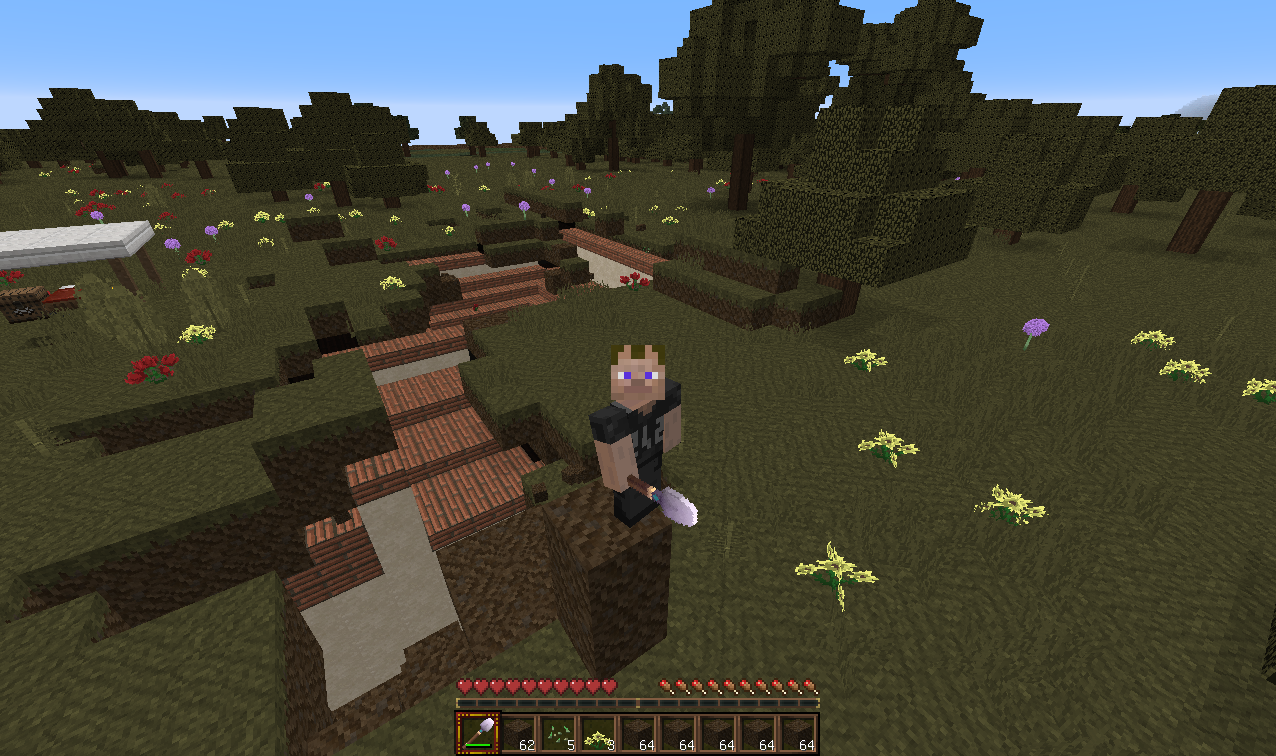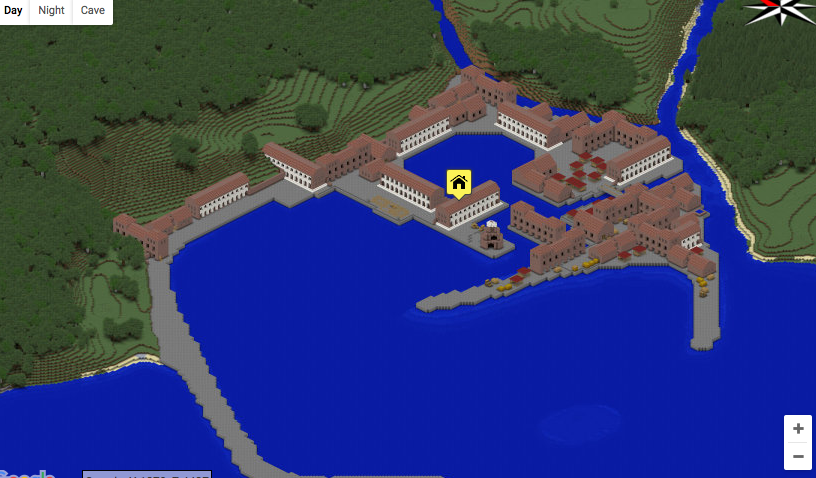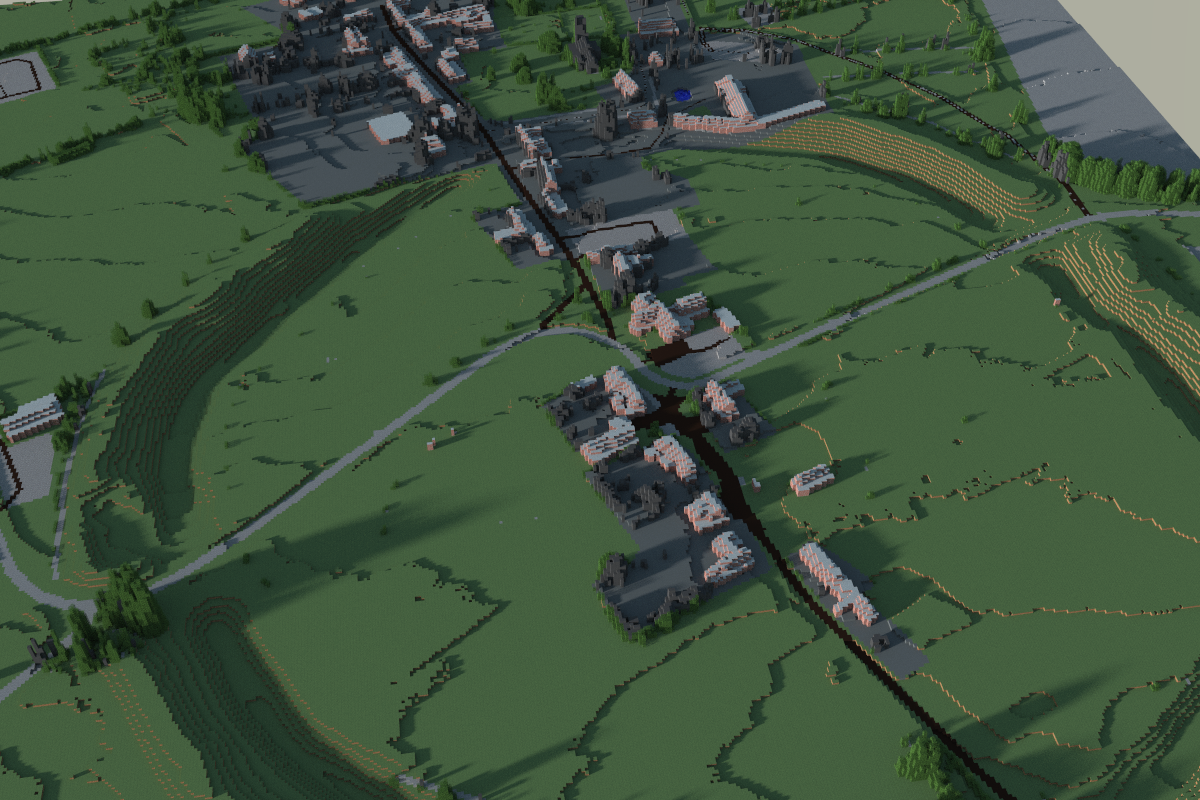This weekend I helped out at the University of Southampton Archaeology department family day. There were lots of hands on activities such as reconstructing a horse skeleton and melting copper in a firepit. I was, of course, up in the (air conditioned) computer room playing Minecraft.
More accurately, I was running a row of computers with a variety of Archaelogy related Minecraft maps.

All of the maps used for the event can be freely downloaded online:
Dig Site

Not a very professional excavation.
My far the most engaging thing was something I created at the last minute. I used a nice model of a Roman Villa and replaced all the “air” blocks with dirt up to a height just above the roof. I then made the top look like a normal minecraft field with flowers and trees but with a tell-tale ridge in the dirt showing the top of the building.
The player then gets a box of spades to dig out the site. It’s very naive but in Minecraft, creations are almost always there on the surface. To have to uncover one interactively was quite a novel idea and it really engaged the younger visitors. It made my day when the first child to play it seemed to get a real thrill to discover the edge of something just under the field.
Portus

Portus
We also provided a fairly out-of-date model of the Roman port of Portus for the visitors to explore. This was much less engaging as there wasn’t enough interaction. It really needs a bit more to pull you into this model. Maybe a printed worksheet to put into context the interesting bits you are exploring. Something that makes it more interactive rather than just a thing to walk around.
Contemporary LIDAR models
I’ve done a lot of work creating a tool to combine LIDAR and open streetmap into Minecraft maps. These are good at showing some of the techniques used in Archaeology but showing modern cities like London & Southampton wasn’t really in the spirit so I created two more appropriate maps. Stonehenge & Avebury.

Avebury from open data sources.
The problem with Stonehenge is it’s pretty boring landscape for the most part, but the LIDAR does show some of the nearby earthworks quite well. The child who interacted the most was a girl who switched to creative mode and had fun “improving” the world heritage site.
The Avebury model is a bit more interesting but it only really clicked with the parents, not the children. I got a nice result by running the model through Chunky, the 3D renderer for Minecraft.
Further work
Some possible ideas came to me as a result of this event.
- Create a Minecraft mod that adds interesting archaeolical features. There’s already some that add “ruins” but this would be intended to leave things mostly buried so that they could be sometimes found by accident when digging.
- Make a Minecraft map that can be used by a school as part of teaching archaeology. The map would seem like a vanilla Minecraft world but would have interesting and reasonably accurate things to excavate. We could simulate “ground penetrating radar” by making a website where you submit your world cooridinates and it gives you back a fuzzy picture. I think running this as an open server would be a mistake as only one person gets each ‘discovery’. Running a server for a small group makes more sense.
- Look into using TerraFirmaCraft in outreach. This is a mod with far more realistic crafting. Ores are found in veins and small amounts can be collected from the ground or in streams. Tools are made by chipping stones. Fire pits and so forth. The problem is that it’s quite hard for younger children and I suspect that anything that requires leaving “vanilla” Minecraft will put-off most teachers who don’t have the slack to learn to install mods for a one-off thing.
- Write a tool which takes a Minecraft world and ages it.
- Remove plant life
- Repeat a few times
- Randomly collapse unsupported structures
- Add a (random?) layer of dirt or sand, but make it “fall” off edges so that large things stick out of mounts, small things are in mounts.
- Re-add grass and trees to the new top layer.
Overall
I really enjoyed my day as an honary archaeologist. Compared to my experiences in computer science events, they were less well organised but with significantly better taste in the beer provided for the wind down afterwards. When it comes to pitching in and love of the subject both archaeology and computer science are about equal, but if I ever have to choose who makes the camp fire, it’s going to be the archaeologist.


0 Responses
Stay in touch with the conversation, subscribe to the RSS feed for comments on this post.